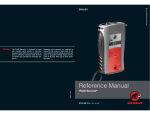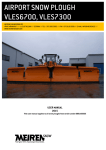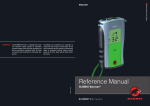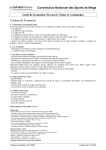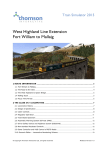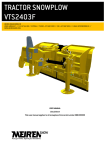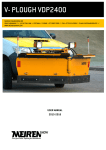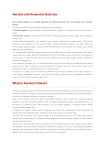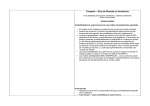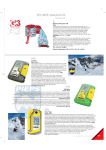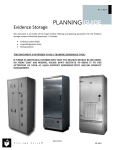Download Barryvox Application Safety Guide Version080820
Transcript
Barryvox Avalanche Rescue Transceivers Application Safety Guide INDEX OF CONTENTS 0. 1. 1.1 1.2 1.3 1.4 2. 2.1 2.2 2.3 3. 3.1 3.1.1 3.1.2 3.2 3.2.1 3.2.1.1 3.2.1.2 3.2.1.3 3.2.2 3.2.2.1 3.2.2.2 3.2.2.3 3.2.2.4 3.2.2.5 3.2.2.6 3.3 3.3.1 3.4 3.4.1 3.4.2 4. 4.1 4.2 5. 5.1 5.2 5.3 Introduction ........................................................................................................1 Battery contacts .................................................................................................1 Bending of battery contacts................................................................................1 Cleanness and corrosion....................................................................................1 Leaking batteries................................................................................................1 Spring supporting elements................................................................................2 Batteries.............................................................................................................2 Purchasing batteries with a CoC (Certificate of Conformance) ...........................3 Indicated remaining battery capacity percentage................................................3 Replacing the batteries.......................................................................................3 Operation ...........................................................................................................3 Turning the device ON and OFF ........................................................................3 Waiting time .......................................................................................................3 Mechanical locking position................................................................................4 Interference problems ........................................................................................4 Introduction ........................................................................................................4 Performance versus tolerance of interference ....................................................4 Organized rescue...............................................................................................5 Training exercises and learning efficiency ..........................................................5 Rules concerning interference............................................................................5 General rule .......................................................................................................5 Magnets and electromagnetic fields ...................................................................5 Transmit mode ...................................................................................................6 Search mode......................................................................................................6 List of objects and equipment (conclusive), which can be used with a beacon ...6 Equipment and objects not listed above .............................................................7 Humidity and water tightness .............................................................................8 Condensation on front window of the unit...........................................................8 Mechanical robustness.......................................................................................8 General ..............................................................................................................8 LCD screens ......................................................................................................8 Maintenance ......................................................................................................9 Periodic Checks for standard frequency use of the device .................................9 Preventive Maintenance for high-frequency use of the device............................9 Maintenance equipment for organisations..........................................................9 CS3000 test equipment for Barryvox Opto 3000 ................................................9 Interpretation of the test results ........................................................................10 Differences of the test results from a tester and the official service centre........10 0. Introduction The Barryvox application safety guide outlines some of the safety aspects of avalanche rescue transceivers in general and for Barryvox specifically. The document is based on the user’s manuals of Barryvox Opto 3000, Pulse Barryvox, Tester CS3000 and know-how gained from many years of application and teaching in institutional civilian settings and in armed forces. This document does not replace but complement the users manual especially for professional users. The document gives answers to many technical questions raised from end users and institutional customers in the past. The aim is, that, following the recommendations in this document, the performance, reliability and efficiency of an avalanche rescue transceiver can be increased and interference problems avoided. Being aware of and applying the following rules and recommendations will increase the degree of safety of your avalanche rescue transceiver. In particular, the document addresses important transceiver fleet management issues. 1. Battery contacts Efficient battery contacts are crucial for the safety and a good performance of the unit. For this purpose the right spring pressure and a clean contact are important. 1.1 Bending of battery contacts It is forbidden to bend battery contacts. If there is a bent/damaged contact or the spring force is low, the unit must be sent to a service center for replacing the battery contacts. 1.2 Cleanness and corrosion Battery contacts need to be clean and free of any corrosion. If a battery contact is corroded, the unit must be sent to a service center for replacing the battery contacts. Corroded contacts lead to power problems of the unit with a very high probability, earlier or later. The user can do the cleaning of the battery contacts with a dry or slightly damp cloth. But handling with special care is needed not to bend the contacts. 1.3 Leaking batteries The acid of leaking batteries is very aggressive to battery contacts and can easily cause corrosion. In case a battery leaked it is highly recommended to send the unit tagged with this information to a service center for replacing the contacts. In case the acid has as well damaged the main contacts to the electronic board, the entire unit needs to be replaced. Remark: Any damage caused by acid of leaking batteries is not covered by warranty. Barryvox Application Safety Guide Version080820.doc Page 1 / 10 The chance to have a leaking battery depends on its quality, the age and the discharge level. The older the battery and the lower the remaining capacity the higher the chance of leaking. Always remove the batteries during longer periods of non-use (i.e. during summer) in order to minimize the chance of leaking battery problems. 1.4 Spring supporting elements (Barryvox Opto 3000 only) The black element under each battery contact spring must be properly in place and not broken. If you see any damage on them or if they are missing, the unit must be sent to a service center for repair. 2. Batteries In accordance with the Norm EN 300718 any Alkaline battery of the size LR03/AAA can be used to power the beacon. But on the market a wide variety of such batteries are available and can lead to significant performance differences. Therefore, the most important parameters of an alkaline battery are listed: Capacity: The higher the capacity, specified in [mAh], the longer the time in use the battery will last. Internal resistor: The lower the internal resistor the better the performance of the battery in the unit, especially over temperature ranges. As this parameter hardly can be found in specifications, the user gets an indication by checking the proposed applications. If the batteries are particularly suitable e.g. for flashlights, cameras etc, thus suitable for equipment with quite a high power consumption, the conclusion is allowed that the internal resistance must be low. Behaviour over temperature range: The lower the degradation of the capacity and the increase of the internal resistance at cold, the better the battery. Quality: There are batteries available with special measures against leakage and extra shape of the contacts to increase the pressure per square millimeter to get a more reliable contact. The better the parameters mentioned above, the higher the price of a battery as a general tendency. Using more reliable batteries can significantly increase the application reliability of a transceiver. Therefore, it is not recommended to use the cheapest batteries. In the beacon 3 batteries are used in a serial application. If one single battery fails or one battery contact causes an interruption, the unit shows a power failure. Therefore, it is important to use 3 batteries of the same type, age and capacity and to replace all of them at once. The contacts of the battery have to be clean and free of any corrosion. If needed they can be cleaned with a dry or slightly damp cloth. Avoid to touch the battery contacts. In General: Store batteries in a cool and dry place. Any humidity can cause corrosion. 2.1 Purchasing batteries with a CoC (Certificate of Conformance) Barryvox Application Safety Guide Version080820.doc Page 2 / 10 Institutional customers might be interested in purchasing batteries with a CoC, which certifies that certain parameters as e.g. dimensions, capacity, etc. are checked by the supplier on a sample basis. The purchaser and the battery supplier mutually have to agree on the parameters to be certified and the conditions in a contract. 2.2 Indicated remaining battery capacity percentage The indication of the remaining battery capacity at start-up of the unit shows different results at different temperatures even with the same set of batteries. If the transceiver shows 40% at 25 degrees centigrade, it has to be expected that the same set of batteries barely has 20% of remaining capacity at minus 15 degrees centigrade. 2.3 Replacing the batteries The lower the remaining battery capacity, the higher is the chance of a battery failure like sudden drop of battery voltage, reverse loading and leaking. At 20% (at room temperature) the batteries must be replaced at the very latest. However, if the replacement is before the indication of 20% (at room temperature), the chance of a power failure can be reduced. When replacing batteries, check that the contacts are not corroded and that the batteries did not leak. The batteries as well as the inside of the battery case should be clean and no sticky residuals should prevent the spring of the battery contact to press the battery firmly up to the plus pole. Batteries of a device, which show a sudden drop of battery power or do not show 99% after replacing the batteries, should be replaced. 3. Operation 3.1 Turning the device ON and OFF 3.1.1 Waiting time (Barryvox Opto 3000 only) When turning OFF a device, it is recommended to wait 15 seconds before turning ON again. Switching the device OFF and ON without any waiting time in between can bring it in an undefined state. Just in case this happens, e.g. the unit is not responding as usual, the unit can be reset by taking out one battery for at least two minutes. Then the battery can be put back into the unit and it should work fine again. Barryvox Application Safety Guide Version080820.doc Page 3 / 10 3.1.2 Mechanical locking position The device turn on electrically before the switch has mechanically locked into the ON position. It is therefore important to make sure that the switch is as well mechanically locked to the ON position. 3.2 Interference problems 3.2.1 Introduction Technical background: Any electronic device has to be compliant to different Norms and Standards depending on country regulations. For example the Barryvox avalanche rescue device complies with part 15 of the FCC Rules and RSS-210 of Industry Canada. In the norms interference problems are split up into two parts and are specified as radiated emission and immunity. This perception leads to the following interpretation: A beacon can be disturbed e.g. by a mobile phone due to (unwanted) radiated spurious signals ( radiated emission) or by a high (wanted) communication signal ( immunity) and vice versa. However, the user has to be aware of interferences starting from both the beacon and the other equipment in question. The tolerances and measuring set ups are defined in such Standards. In addition, as the beacon works with a magnetic field on 457kHz any conductive or ferro magnetic part (e.g. case of another electronic unit, mobile phone etc.) close to the antennas (within 20cm) can put them out of tune and therefore derogate the performance e.g. range and sensitivity. 3.2.1.1 Performance versus tolerance of interference The user has to be aware of interference problems. On one hand the range of a beacon is required to be as large as possible on the other hand the sensitivity for any kind of interference increases. In a beacon of the new generation further sensors and equipment as e.g. electronic compass, acceleration sensor or even a Wireless-Link antenna for data transfer are implemented to support the user in the search phase to increase the efficiency and make the search easier. All these sensors are also subject to interferences and the user has to be aware of that. In Chapter 3.2.2.5 a conclusive list of equipment is given and the conditions of common use with a beacon so that interference problems can be neglected. In general: The search mode is more sensitive on interference problems than the transmit mode. Due to the rapidly decreasing survival chances of avalanche victims, the efficiency during the rescue action is very important. Every interfering source, which might compromise the performance of the search, has therefore to be eliminated. Furthermore, the rescuers are only able to process a very limited amount of data during this highly stressful and critical rescue process. Besides a transceiver, probe and shovel, only communication equipment and in very rare cases orientation equipment and a headlamp are necessary for a successful companion rescue effort. Survival gear like ABS system, Avalung and the Avalanche Ball might be used by the rescuer at all times and does not compromise or influence the performance of the avalanche rescue transceiver. All further equipment is not only unnecessary but Barryvox Application Safety Guide Version080820.doc Page 4 / 10 does with a high probability directly compromise the efficiency of the search and therefore reduces the survival chances of the victims. 3.2.1.2 Organized rescue In organized avalanche rescue, different search device (transceiver, RECCO, dog) can and should be used in parallel in order to increase the chance and speed of detection. The set of rules concerning interference to the avalanche rescue transceiver remain the same and do not compromise the parallel application of the different search means. The influence of the avalanche rescue transceiver to the RECCO device is known and can be eliminated by applying an appropriate separation (3m) between the rescuers and by not pointing the RECCO search device directly to other rescuers. 3.2.1.3 Training exercises and learning efficiency Avalanche rescue training exercises have the aim to simulate the real search and rescue action as realistically as possible. Therefore, the same rules count as for the real rescue action. Furthermore, it is widely proven and accepted that the learning efficiency gets compromised by any side-tracking element (e.g. mobile phone). A reduced learning efficiency during the avalanche rescue exercise reduces as well the chance to efficiently, rapidly and successfully carry out a real rescue. Any additional disturbance should be avoided. For the above mentioned reasons, all users of an avalanche rescue device are asked in the interest to increase the survival chances of the avalanche victims not to use any technically and mentally interfering equipment (cameras, mpg-player etc.) during rescue and rescue exercises. 3.2.2 Rules concerning interference 3.2.2.1 General rule As a matter of principle, avoid having any other electronic device (e.g. mobile phones, radios, headlamps, cameras, radio transceivers), metallic objects (e.g. pocket knives, magnetic buttons), or other beacons closer than 20cm to your running avalanche transceiver. Avoid wearing cloths with magnetic buttons or larger metallic and/or conductive parts (e.g. nets). 3.2.2.2 Magnets and electromagnetic fields The Barryvox Opto 3000 has, like other avalanche rescue transceivers, a magnetic ON / OFF switch and therefore magnets in close proximity can turn the unit ON or OFF at any given moment. The Pulse Barryvox contains an electronic compass and is, especially during search, highly sensitive to magnets and electromagnetic fields (like a compass or most of the modern handheld GPS device with an electronic compass). Therefore, clothing with any magnetic parts as e.g. buttons or loudspeakers of radios must be avoided. Barryvox Application Safety Guide Version080820.doc Page 5 / 10 3.2.2.3 Transmit mode In transmit mode a minimum distance of 20cm has to be respected between the avalanche rescue transceivers and any of the mentioned objects in Chapter 3.2.2.5. 3.2.2.4 Search mode In search mode, a minimum distance of 50cm has to be respected between the beacon and the listed objects in Chapter 3.2.2.5. In addition, turn off all other electronic device (e.g. mobile phone) if possible, to increase the performance. 3.2.2.5 List of objects and equipment (conclusive), which can be used with a beacon Following the rules (see 3.2.2.3 and 3.2.2.4) the listed objects and equipment below can be used together with a beacon and the interference on the beacon’s side is negligible. Additional information is given right below the listed equipment. General equipment - metallic frames of backcountry backpacks - non engine driven snow sport equipment (skis, snowboards, snowshoes) - climbing gear (carabiners, ice axes, crampons, etc.) - electric head lamps excluding headlamps with switching power voltage regulators - snow study kits incl. metallic snow saw - improvised repair equipment and tools like pocket knifes and pocket multi purpose repair tools Search, rescue and survival equipment - ABS, Avalung, Avalanche Ball - avalanche rescue transceivers - RECCO search devices (3m, not pointing to other rescuers) - RECCO reflectors (reflectors may be placed at any distance without any risk of interference) - avalanche probes and shovels (metallic and carbon probes may not be place parallel to the snow surface during pinpoint search) Vehicles: - snow mobiles, snow grooming machines, cars, snowploughs, snow blowers The search from such vehicles can be severely disturbed by interferences from the running engine, metal plates and the vehicle electronics. In transmit mode, there could be some kind of interference, but the performance hardly will be affected. For example the pinpointing accuracy could be reduced as well as the search precision in close proximity of the vehicle in general. - helicopters The search from a helicopter is possible with the Barryvox Pro Ext helicopter search device only. The antenna is outside of the helicopter in order to reduce any interference. Barryvox Application Safety Guide Version080820.doc Page 6 / 10 Medical equipment - pacemakers Users of pacemakers are advised to carry the Barryvox on their right side (adjust the length of the carrying straps. Consult the manufacturer’s instructions of the pacemaker with regards to the interference impact. - portable heart rate monitors (need to be switched off during search) - first aid equipment incl. metallic splints Communication equipment - analog VHF and UHF radios up to 5W transmit power Interference may occur during transmit. - digital VHF and UHF radio up to 5W transmit power Interference may occur during transmit, radio needs to be turned off during search. - Cellular phones and satellite phones Inference may occur during communication (incl. synchronisation), phones need to be turned off during search. - PLB (personal locator beacon) Interference may occur during transmit within 20m from the device. Orientation equipment - electronic and mechanical altimeters - electronic and mechanical compasses - handheld GPS receivers Weapons - guns and pistols Weapons incl. optics, but excluding electronic systems; if the weapon is carried diagonally on the front side of the body, the transceiver must be carried sidewise. 3.2.2.6 Equipment and objects not listed above The variety of electronic equipment (entertainment, video, etc) that rescuers have been trying to use in combination with their avalanche rescue transceiver has tremendously grown in the past years. Whereas some of the equipment might not cause an interference problem in combination with a particular transceiver, it does with others and vice versa. It is therefore impossible to make a general valid recommendation for each individual device and transceiver. Several reports from failed or severely disturbed and delayed rescue action in the last years have shown that electronic equipment can have a very unpredictable and severe influence on avalanche rescue transceivers. Therefore, any kind of electronic equipment and metal parts, which are not explicitly listed above, have to be expected to cause any kind of misbehaviour or complete failure of all functions. High voltage power lines and radio towers may as well dramatically reduce the performance of an avalanche rescue transceiver. Often, the digital search mode Barryvox Application Safety Guide Version080820.doc Page 7 / 10 completely fails and it is necessary to carry out an analog search by applying primary search strips with a very limited width. 3.3 Humidity and water tightness Although the Avalanche Rescue Transceiver is waterproof in accordance with Norm EN 300718, the battery case is not. To avoid problems as corrosion and discharging of batteries it is recommended to dry the unit as well the carrying systems over night (i.e. in a drying room or another dry and warm place), especially during very intensive use. The straps should not be wrapped around the unit as this prevents the drying process. Units, which are wet or very humid, might show a reduced reliability. If it is not possible to dry the transceiver and the carrying system (i.e. igloo, snow cave) keep your device as close as possible to your body as you would carry it during the day. 3.3.1 Condensation on front window of the unit If such condensation happens on the front window, keep the unit on a dry and warm place. Then, after a while the humidity inside should be reduced to a normal level and the fogging up should stop. However, in such a case it is recommended to do a preventive maintenance at an official service centre. 3.4 Mechanical robustness 3.4.1 General As all transceivers, the Barryvox contains shock-sensitive ferrite antennas. The antennas are the most shock sensitive part of the device and the transceiver should therefore be handled with utmost care. Never hide your transmitters for an exercise by throwing the unit away from you and do not let it fall down on a hard surface. In case your transceiver has been mechanically mistreated, send it in for a periodic check (see 4.1) 3.4.2 LCD screens The window of the LCD screen is the mechanically most sensitive part on the surface of the device. Regardless of the carrying position, the display should always face your body. While transporting the transceiver, leave it in its harness for additional mechanical protection or put it in a position where no sharp objects and mechanical pressure can damage the screen. When you hide a transceiver for an exercise, protect it well and always place it with the LCD screen facing downwards. Mechanically damaged LCD screens and screen windows are generally not covered by warranty. Barryvox Application Safety Guide Version080820.doc Page 8 / 10 4. Maintenance 4.1 Periodic Checks for standard frequency use of the device (less than 100 days or <500 hours per season) To ensure the proper functionality of the transceiver, it is highly recommended to do a preventive maintenance every 3 years of the device at an official service center listed on the inside of the user’s manual cover. There is a service charge involved. This functional test is far more comprehensive than the self-test or group check. This periodic check preferably shall be done during the summer months, so that your Barryvox is ready at the beginning of the winter season. Pulse Barryvox shows the recommended date of the next check under «Maintenance» of the menu tree. 4.2 Preventive Maintenance for high-frequency use of the device (more than 100 days or >500 hours per season) The intensive use of the device leads to more wastage especially on mechanical parts as e.g. battery contacts. To keep the reliability of the use and the performance of your avalanche rescue transceiver on a high level, it is highly recommended to periodically carry out a preventive maintenance. For Barryvox Opto 3000, preventive maintenance is recommended every second, for the Pulse Barryvox every third season. Ascom offers a preventive maintenance service for such device. The service includes a full check of the device, replacing damaged parts and battery contacts as well as a water tightness test. Preferably, such preventive maintenance shall be carried out in the time frame of April until September. 5. Maintenance equipment for organisations 5.1 CS3000 test equipment for Barryvox Opto 3000 The CS3000 is a highly sensitive technical measurement device and requires an environment free of interferences, particularly around 457 kHz. The CS3000 can be influenced by (its not a conclusive list): - the wiring of the CS3000 - the PC, screen and PC power supply - the lights in the testing environment (in particular florescent lights) - metals, other conductive of magnetic parts - magnets and electromagnetic fields (loudspeakers, radios) - transceivers on transmit - building, heating, mobile phones etc. In case you experience problems with the CS3000 device, please get into contact with the manufacturer to clarify the situation. Photos of the test set up could be of a big help. 5.2 Interpretation of the test results Barryvox Application Safety Guide Version080820.doc Page 9 / 10 Assumed the tester operates in an interference free environment then a positive result (PASS) gives the user the confidence that the unit is OK for operation. However, sporadic failures hardly can be detected with a tester. Therefore, the user shall be observant and report such cases to the corresponding responsible person in the organisation. 5.3 Differences of the test results from a tester and the official service centre This is a special case and has to be treated with special care as the problem could be at the tester or at the device under test. Additional assistance can be required by the supplier of the test equipment. Barryvox Application Safety Guide Version080820.doc Page 10 / 10











